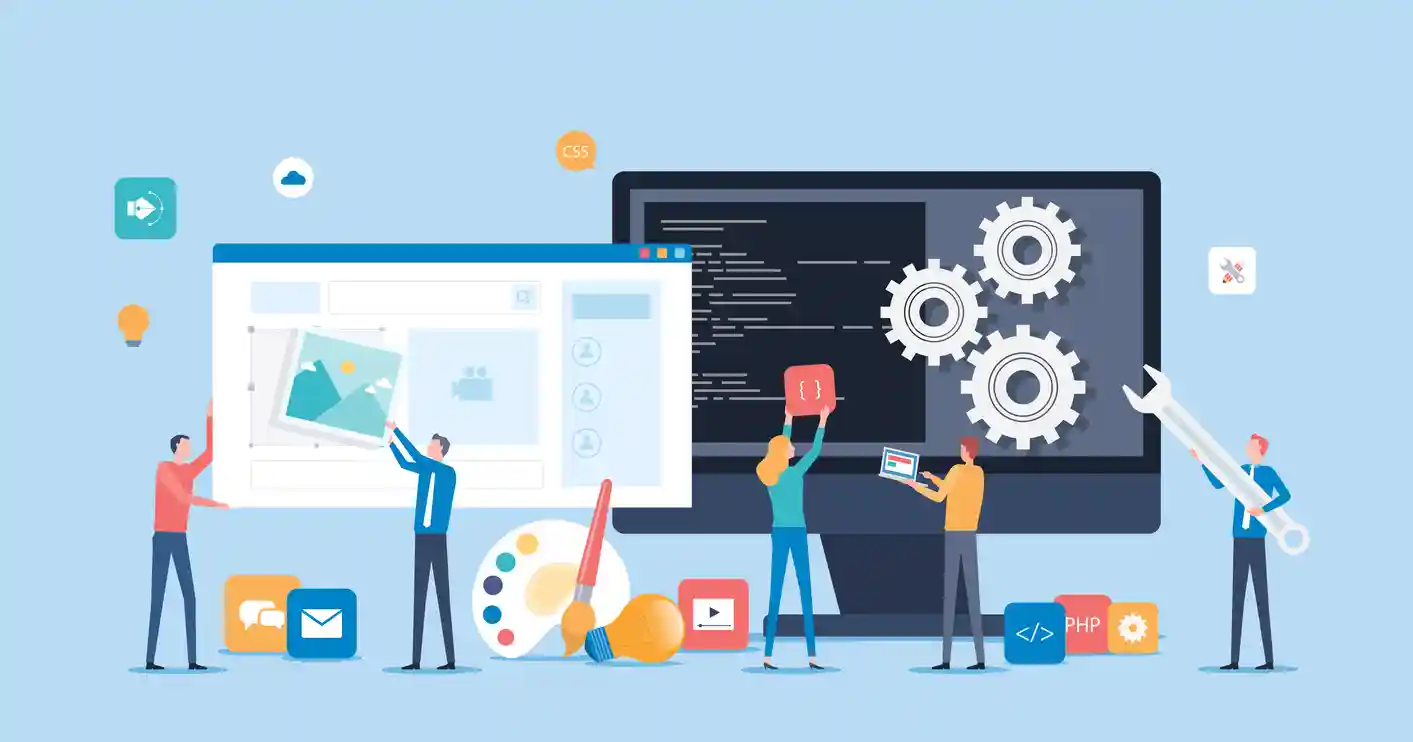introduction
In today's business environment, task management is becoming increasingly important. Especially in team projects, task management is essential to increase the work efficiency of each member and the overall performance of the team.
Effective task management ensures smooth project progress and helps you achieve high-quality results on time. Additionally, task management helps optimize resources, make better use of time, and reduce stress.
This article introduces 5 effective task management methods to keep your team moving smoothly.
These methods include prioritizing tasks, optimizing communication, applying task management, feedback and improvement processes, and leveraging technology. When used properly, these methods can help teams work more efficiently and achieve their goals.
Chat&Messenger is groupware that integrates business chat, web conferencing, file sharing, schedule management, document management, conference room reservation, and attendance management in an easy-to-use manner. Perfect security for businesses,Available for free!

Prioritize tasks
How to determine priorities
Task ManagementAt its core is task prioritization. Efficiently identifying important tasks and processing them in the proper order is essential to achieving your team's goals. Below, we will introduce a specific approach to how to determine priorities.
- Use Eisenhower's matrix: Eisenhower's matrix classifies tasks into four categories: "urgent and important," "not urgent but important," "urgent but not important," and "not urgent or important." This method helps you prioritize tasks efficiently.
- Assess deadlines and impact: Determine which tasks should be addressed first by evaluating each task's deadline and impact on the overall project. Tasks with fast deadlines or high impact have high priority.
- Using the MoSCoW method: The MoSCoW method divides tasks into four categories: "Must have," "Should have," "Could have," and "Won't have." This allows you to focus your team's resources on the most important tasks.
- Gather team opinions: By incorporating feedback from team members, you can better understand the actual importance and urgency of each task. This reflects the perspective of the entire team and helps with balanced prioritization.
- Conduct regular reviews: Priorities may change depending on market conditions and project progress. Therefore, it is important to conduct regular reviews and re-evaluate priorities as the situation demands.
Determining priorities is a critical step in helping your team effectively move toward its goals. Applying these methods will help your team focus on important tasks and make the most of their time. In the next section, we'll take a closer look at effective prioritization techniques.
Effective prioritization techniques
When prioritizing, it's more than just a list of tasks. Here are some specific techniques for effective prioritization.
- Use SMART criteria: When setting tasks, use SMART (specific, measurable, achievable, relevant, time-bound) criteria to set clear, actionable goals. This approach allows you to more accurately assess the importance and urgency of each task.
- Adopt a data-driven approach: Analyze past project data and performance metrics to determine which tasks will have the most impact. Data-driven insights help avoid subjective judgments and help you prioritize objectively.
- Perform task decomposition: Break down large tasks into smaller subtasks and prioritize each one. This process makes even large projects manageable and efficient.
- Consider resource availability: Consider available resources (human resources, time, budget, etc.) and focus on the most effective tasks within resource constraints. This will help you avoid wasting time on tasks that are impossible to perform.
- Establish a feedback loop: Gather feedback from team members and stakeholders on a regular basis and use it to adjust priorities. This feedback loop allows us to respond flexibly to changing conditions and new information.
Effective prioritization allows your team to focus their time and energy on the most important tasks, increasing overall productivity. The next section describes common prioritization pitfalls and strategies to avoid them.
Optimize communication
The importance of effective communication
Effective communication is an essential element of successful task management. This communication provides the foundation for teams to work together toward a common goal and accomplish tasks efficiently.
By sharing critical project-related information with your entire team, you can stay informed and make necessary adjustments quickly. Clear communication reduces misunderstandings and quickly resolves any issues that arise. This helps prevent project delays and increases work efficiency.
Additionally, effective communication builds trust among team members and strengthens a sense of unity. This allows members to work together on complex tasks.
Communication facilitates the exchange of feedback and supports continuous improvement for individual members and the team as a whole. This improves task quality and project outcomes.
Effective communication also gives your team the flexibility to respond quickly to changing circumstances and new requirements. This is important for increasing the adaptability of task management and delivering results in situations of uncertainty.
Overall, effective communication within a team is the foundation that supports the smooth running of the entire task management process. Facilitating information sharing, reducing misunderstandings, strengthening team cohesion, encouraging feedback and improvement, and increasing flexibility are essential for teams to move effectively toward a common goal.
Through clear and open communication, team members can understand each other and work together to tackle complex challenges. This improves the quality of tasks and the overall project outcome.
How to use communication tools
Utilizing communication tools is essential to increasing transparency and efficiency within your team. Choosing and using the right tools can greatly contribute to quickly sharing information, accelerating problem resolution, and fostering a sense of team cohesion.
First, it's important to consider your team's needs and project requirements holistically when selecting tools. Large projects and complex tasks benefit from full-featured project management tools, but for smaller projects or when direct communication is important, a simple messaging app or email may be a better choice. not.
To effectively utilize your chosen tool, it's important to have a deep understanding of its features and functionality, and to adopt a consistent usage approach across your team. For example, you can manage your projects more efficiently by taking full advantage of the tools' features, such as assigning tasks, tracking progress, and setting deadlines.
It is also important to develop communication guidelines. This creates clear standards for what information is shared on which platforms and prevents information from being confused or overlooked. Additionally, setting appropriate response times will ensure prompt communication between members, contributing to the efficient progress of the project.
Improved communication within the team
Improving communication within a team is critical to project success. Good communication can reduce misunderstandings, increase efficiency, and deepen trust between members. To improve communication within your team, the following factors are important:
First, we need to foster a culture of open communication. This includes team leaders taking the lead in demonstrating transparency and creating an environment where team members feel free to express their opinions and concerns. An open environment makes it easier for members to share their ideas and receive feedback and support from colleagues.
Next, it helps to have regular check-ins and meetings. During these meetings, discuss project progress, tasks to be accomplished, and any concerns. This allows team members to stay informed about the current status of a project and respond quickly when needed.
It is also important to create opportunities for informal communication. Informal lunches and team-building activities can help strengthen relationships between members outside of the formal workplace environment. Activities like this increase team cohesion and encourage better communication.
Finally, it's important to encourage feedback and translate it into action. Through regular feedback sessions, members receive meaningful evaluation of their work and how the team is doing. It also helps your entire team grow by connecting the feedback you receive with actionable improvements.
These efforts greatly improve communication within the team and contribute to efficient project progress.
Applying task management
Basic principles of task management
The basics of task management begin with accurately estimating the amount of time each task will take. Data from past projects and analysis of time spent on similar tasks can help with this. Accurate time estimates allow you to create realistic schedules and set appropriate deadlines.
Next, techniques to increase your concentration on tasks are effective. For example, you can use time-blocking techniques to set aside periods of time to focus on specific tasks. This allows you to work efficiently without being distracted by other challenges or obstacles.
Also, don't forget the importance of rest periods. Fatigue from long hours of work reduces productivity, so it's important to take regular breaks to refresh your mind and body. Short breaks are known to restore concentration and improve work efficiency.
Additionally, leveraging digital tools and apps can also help with task management. For example, time tracking apps and calendar management tools make it easy to track the progress of your tasks and optimize your time usage.
Finally, it's important to remain flexible. Projects often encounter unexpected obstacles that require schedule adjustments to accommodate. Flexible task management allows you to quickly respond to situations like this and get your project back on track.
How to use your time effectively
In order to use your time effectively, it is important not only to complete tasks quickly, but also to improve the quality of your work. Making the most of your time has a direct impact on your team's productivity and overall performance.
The key to time management is task prioritization. It's helpful to rate tasks based on importance and urgency, and tackle the most important first. This approach allows you to focus your resources on the tasks that need it most and achieve important results first.
Splitting tasks is also a good strategy for making the most of your time. Breaking a large project into smaller sections makes it easier to focus on each section and track progress specifically. This makes it possible to maintain continuous motivation even in long-term projects.
Furthermore, streamlining communication between teams is also important for making effective use of time. Share task progress through regular meetings and updates between team members and reallocate resources and provide support as needed. This can prevent task delays and improve overall efficiency.
In order to use your time effectively, it is important to combine these strategies and be flexible.
Common problems in time management
There are several common time management issues that can affect the progress of a project. Understanding these issues and responding appropriately is key to increasing team efficiency and productivity.
One big problem is inaccurate task estimation. Underestimating how long a task will take makes it difficult to create a realistic schedule and can result in project delays. To deal with this problem, it is effective to refer to data from past similar projects or to schedule with some leeway.
Changing priorities mid-project is also a common problem. Sudden changes can derail plans and reduce team motivation. To avoid this, it's important to set clear goals at the beginning of the project and clearly communicate to the entire team if they change.
Additionally, lack of breaks is another problem with time management. Without proper breaks, team members become fatigued and less productive. A good way to combat this is to take short breaks between tasks and longer breaks after long periods of work.
By properly addressing these issues, your team can use their time more efficiently and contribute to project success.
Utilization of technology (groupware)
As one of the five ways to manage tasks, leveraging technology is the key to solving the challenges faced by modern teams and significantly improving efficiency.
The use of groupware, especially with task management tools, offers a variety of features such as automating tasks, managing schedules, allocating resources, and visualizing progress, allowing teams to save time on daily manual tasks. and focus on more important strategic tasks.
Adopting cloud-based groupware tools also greatly increases flexibility and efficiency by allowing team members to access and share project-related information in real time from anywhere. This is especially important in today's era of geographically dispersed teams and remote working, allowing people to collaborate across physical constraints and work efficiently toward a common goal. I'll make it.
Groupware supports many aspects of a project, from assigning tasks to tracking progress, managing schedules, and sharing documents. This gives team members a clear view of their individual responsibilities and task status, increasing overall visibility of project progress. Thus, leveraging modern technology, including groupware, can greatly improve a team's ability to manage tasks and increase overall productivity.

Feedback and improvements
As one of the five methods of task management, the "feedback and improvement" process plays a vital role in task management and team development.
Regular feedback is key to improving the performance of individual members and the team as a whole. Through feedback, members can understand their strengths and weaknesses and hone their skills accordingly.
A successful feedback process relies on open and honest communication. By providing constructive feedback, project managers and leaders help team members objectively evaluate their performance and take concrete steps to improve. Feedback from members is equally important and can provide valuable insight into project progress and team dynamics.
And it's important to give feedback regularly and continuously. This enables members to make real-time improvements in ongoing projects and achieve long-term growth. It's helpful to have a balanced feedback session that highlights both positive aspects and areas for improvement. This allows members to feel confident and motivated to grow.
Next, it's important to implement specific improvements based on the feedback. After receiving feedback, individual members and the team as a whole need to develop a concrete action plan and put it into action.
A well-implemented feedback and improvement process will help your team effectively manage tasks and contribute to project success.
summary
In this article, we explored five ways to make team task management go smoothly. These methods include prioritization, optimizing communication, time management, feedback and improvement processes, and leveraging technology. These elements are critical to project success and contribute to increased team efficiency and productivity.
Task prioritization allows you to effectively organize your team's work and focus on important tasks. Optimizing communication reduces misunderstandings among members and promotes cooperation toward common goals. Time management helps you use resources efficiently and keep projects on track.
Feedback and improvement processes foster continuous growth for individual members and the team as a whole. And the use of technology supports these processes and increases project efficiency and effectiveness.
Utilizing these methods holistically and continually evaluating and improving is key to team success. Project success is ensured by bringing out the best in each member and working together as a team to achieve the goal.
We hope the insights and advice provided in this article will help you effectively manage your team's tasks and smooth the way to achieving your goals.

